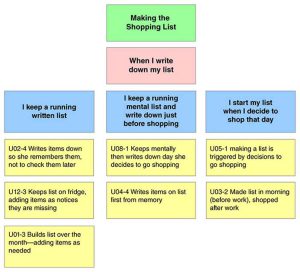limitations of Contextual Design
The goal of contextual design is to create a product that fits seamlessly into the user’s life, taking all aspects of their environment and behavior into account. This includes physical context (like the location of use), social context (the larger societal norms and expectations that influence their behavior), and cultural context (the values, beliefs, and attitudes that guide their behavior). This approach requires a greater investment of time and effort upfront, placing more emphasis on deep research before feature development begins. It involves techniques like user interviews, observations, and contextual inquiry field studies, and allows UI/UX designers and developers to understand their users’ workflows by observing them in the ways that they will use the product.
Unlike a survey or focus group, contextual interviewing focuses on understanding the details of work practice, rather than on what the participants believe is most important in a product. This is done by using open-ended questions and working with the participant as a “master–apprentice” to draw out their work practice in detail. A graphical model is then created to show this work practice, which can be used to inform design decisions.

A graphical model of an entire work practice shows the team the full scope of a product’s impact, which can help them avoid focusing on just one aspect of the design. For example, they may overfocus on the sequencing model, when the Day-in-the-Life model shows how the sequence is just a small part of their overall life experience.
What are the limitations of Contextual Design?
These models also allow the team to identify the most valuable functionality. This can help them to prioritize features, and to develop and test paper prototypes with users before starting to build code. This can speed up development and reduce the time it takes for a product to be released, increasing adoption rates. It can also help to identify complementary functionality and other revenue streams for the product.
All of the graphical models are an important part of the Contextual Design process, as they make abstract concepts tangible for the team to discuss and debate. Creating diagrams has been an integral part of software development since programming became its own discipline, and making the abstract concrete is a key element in effective teamwork.
While useful, the qualitative data gathered through Contextual Inquiry is not necessarily statistically significant. It is therefore advisable to supplement the results with quantitative techniques.
The contextual approach to user research can be too labor intensive for certain projects. It is not appropriate for targeted design tasks such as redesigning an ecommerce product page or testing a newsletter signup form. However, contextual research can be beneficial for a broader design task that involves rethinking the overall product structure and content. Obtaining this deeper level of understanding can help a team to develop a product that will have long-term success and create user loyalty.


